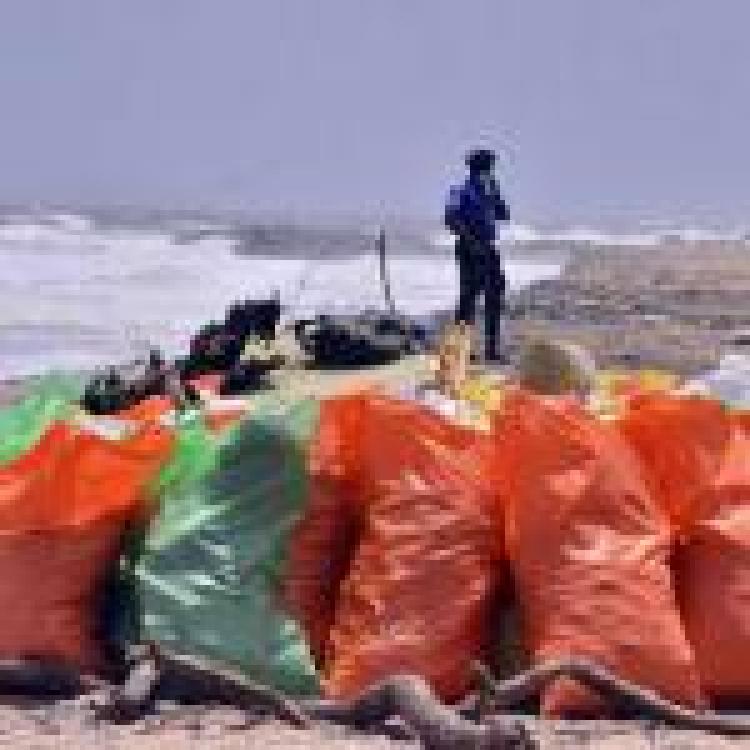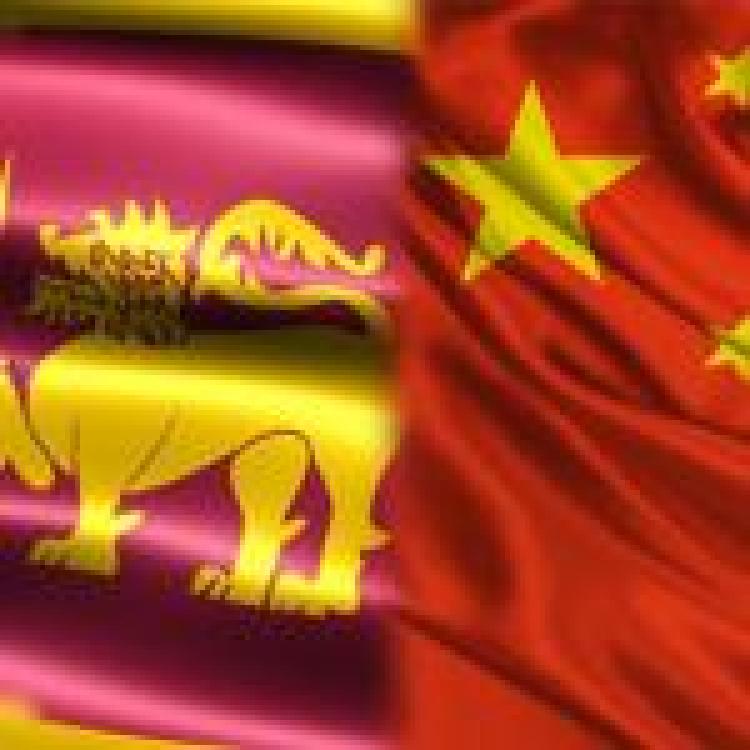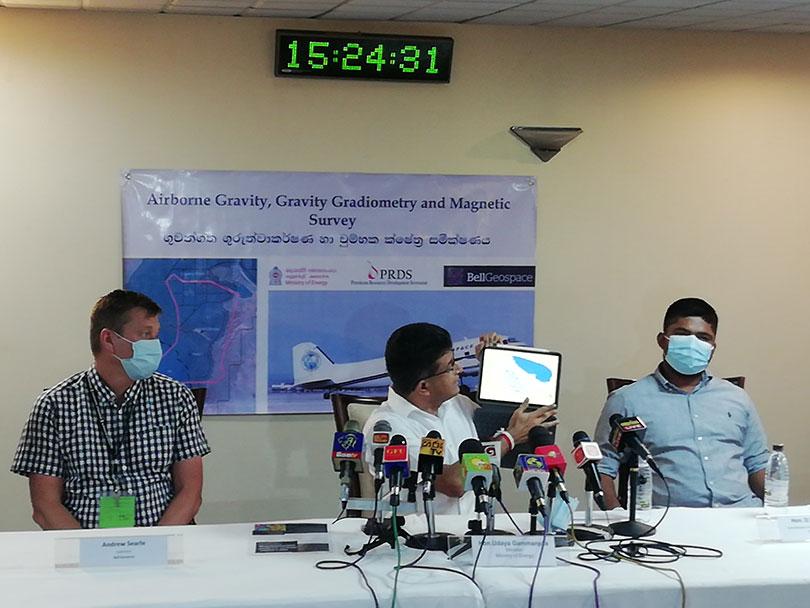
Udaya Gammanpila (Centre)
Sri Lanka's Minister of Energy, Udaya Gammanpila has claimed that exploring and discovering oil and gas resources in the Mannar basin is the only way for the country to pay of its crippling debts.
Gammanpilla held a media briefing and stated that there are "2000 million barrels of crude oil in the Barakuda area, which is currently known as the M-2 in the Mannar Basin in Sri Lanka. Its value is US$ 150 billion, and it has also been discovered that there are 9 trillion cubic feet of gas in this basin valued at US$17 billion,". The minister added on that Sri Lanka could earn US$167 billion from the sales of these oil and gas reserves which could be used to service the US47 billion foreign debt that the Rajapaksa regime finds itself in.
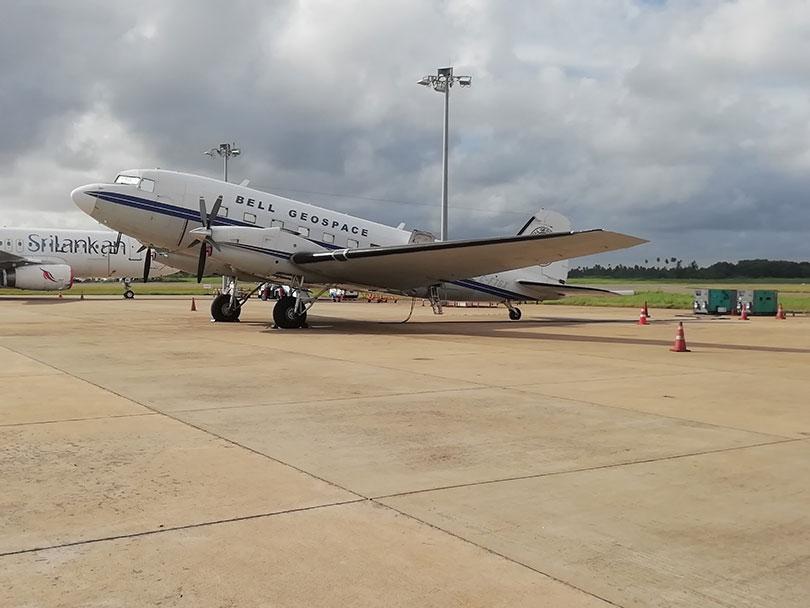
Bell Geospace - Survey Plane
The minister stated that a Petroleum Development Authority will be set up for the purpose of pursuing this exploration following the passing of the Petroleum Development Act in Parliament next month. The minister noted that Bell Geospace, a geophysical exploration company for oil, gas and precious metals, had begun conducting surveys over the Mannar basin using its exploration aircraft and started to process its data. Speaking on potential investors to explore oil and gas the minister noted that there are no Sri Lankan businesses able to facilitate this, so he expects to visit the United Arab Emirates, Iran, India, Abu Dhabi and the United States in the next few months in order to search for such investors.
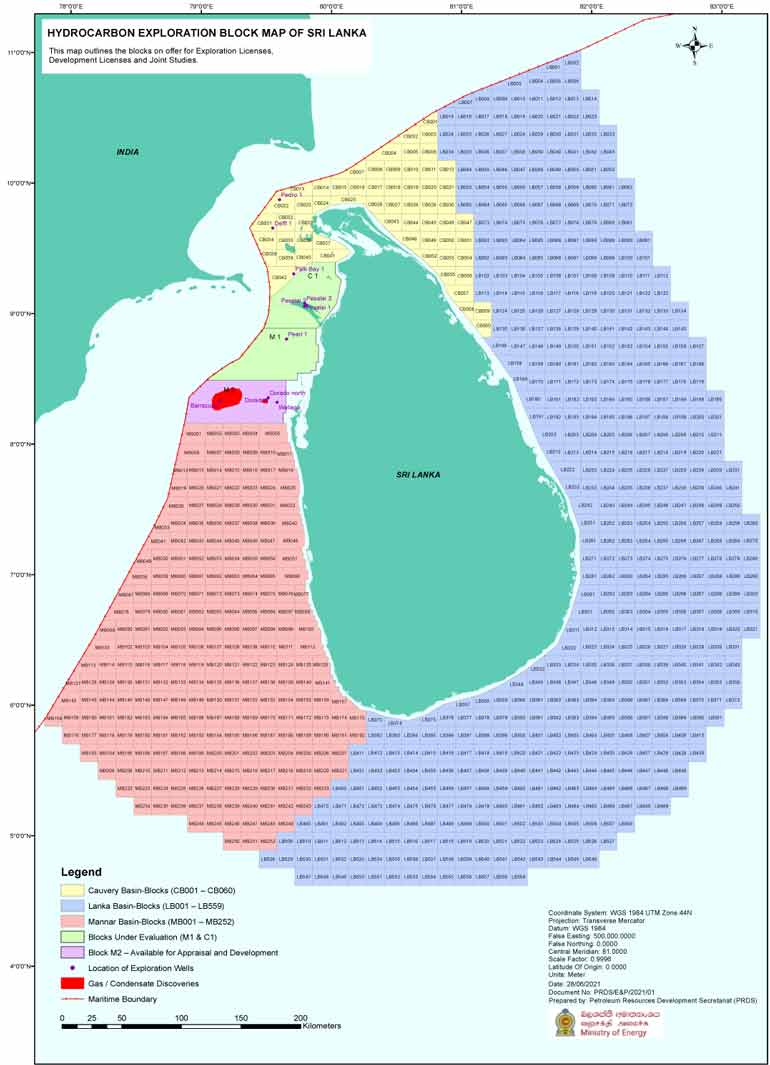
Gas and Oil Map.
Earlier this year Gammanpila in a gazette notification published a map of blocks for joint exploration of gas and oil. The map contains 873 blocks of 15x15 Km each in the Mannar basin and will enable investors to select blocks for exploration. The project is aimed at attracting the top 20 oil and gas companies in the world to invest in the sector.
Sri Lanka's interest in oil and gas investments comes months before delegates from across the world head to Glasglow for COP26 where intensive discussions on decarbonisation will be held.
Sri Lanka's Climate Risk
A report published by the World Bank in partnership with the Asian development bank outlines the climate risk associated with Sri Lanka if emissions are not curved to keep global temperature rises below the Paris Climate agreement designated 1.5 degrees. It was noted in the report that "Sri Lanka faces a significant threat from extreme heat with the number of days surpassing 35°C, potentially rising from a baseline of 20 days to more than 100 days by the end of the century under emissions pathway RCP8.5". The RCP8.5 emissions scenario is generally referred to "as business as usual", suggesting it is a likely outcome if no efforts are taken to reduce greenhouse gas emissions. Extreme heat threatens human health and living standards, particularly outdoor labourers in areas without adequate cooling systems, the report notes that extreme heat events will 'particularly impact communities in Sri Lanka's northern region'. The projected changes expected are expected to impact on Sri Lanka's poorest and most marginalised communities, exacerbating poverty and inequality.
Read more at the Daily Mirror and the DailyFT

